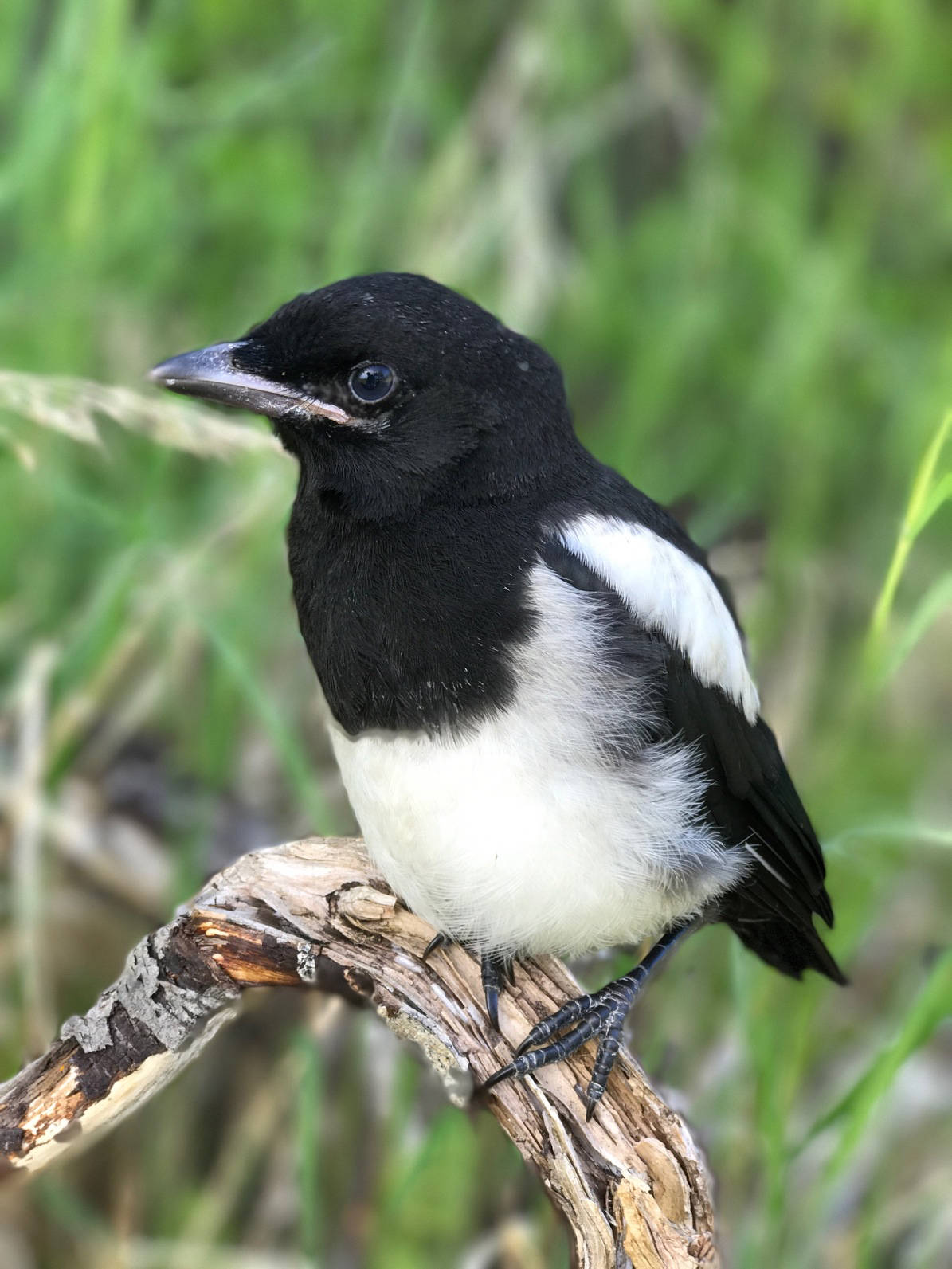Following is the second in a monthly series of articles about birds and birding, celebrating The Year of the Bird, 2018.
In Meet the Corvids – Part I we met the most prominent members of the Corvid Family — the crows and ravens. Now let’s meet the jays and magpies, which are also members of this interesting family.
If you have been camping in Alaska, then you are familiar with the “camp robber” or gray jay. This bird — or more likely birds — boldly swoop in to your picnic or camp site looking for handouts. As the name implies, the bird has a soft gray look with a distinctive black hood and white forehead. The gray jay is not a migrant, and can be enjoyed year-round in the Homer area. It is even tough enough to start nesting in winter. Gray jays have an “Alaskan cache” as they store food for the winter. Gray jay’s saliva is described as “super sticky” and is used to hold food together when being cached. During a given year, a bird may cache food at thousands of different sites. As a result of this abundance of cached food, they are able to breed earlier in the year.
On the heels, or rather wings, of the gray jay at your campsite there will probably be the equally bold Steller’s jay — a strikingly colorful jay with its large black head crest, charcoal head and nape, with a deep blue body. The Steller’s jay does not migrate south for the winter, so it is also a Homer resident. Steller’s jays are readily attracted to feeders where we can enjoy their antics of stuffing their mouth pouch and throat with food to cache later. Their presence is a photographer’s delight. If you want to attract the Steller’s jay, try putting out peanuts — one of their favorite treats.
The Steller’s jay announces its presence with a loud call sometimes described as the sound of an old-fashioned pump handle needing grease. The Steller’s jay, like many of the Corvids, is an accomplished mimic, often mimicking the sound of a hawk, thus causing other birds to flee a good feeding site.
What’s in a name? This bird is named after the German naturalist Georg Wilhelm Steller, the first European to record them in 1741 as part of the Bering expedition.
One more Corvid friend of distinction in the Homer area is the black-billed magpie. If you see a black and white bird with a long tail, then you are surely looking at the black-billed magpie. The black and white is complimented with iridescent dark blue-green wings and tail. The long tail makes up more than half the bird’s length. Like the gray jay and the Steller’s jay, the black-billed magpie is tolerant of people and will quickly know when you have placed suet at your bird feeder. They seem to appear out of nowhere. When hiking the forest, look for a large collection of twigs and woody material in the tree. Magpies mate for life, and nests can become quite large, four feet high and four feet wide, as they may add to a nest each year if the nest is reoccupied. Magpie nests are favorites for hawks and owls. And, like owls, the black-billed magpie will often regurgitate a pellet during its night roost.
Here’s an interesting piece of bird trivia: like other corvids, black-billed magpies indulge in anting (applying ants onto their plumage). The ants, when crushed onto the feathers, secrete liquids containing chemicals such as formic acid, which can act as an insecticide, miticide, fungicide or bactericide. Alternatively, anting could make the insects edible by removing the distasteful acid, or, possibly supplement the bird’s own preen oil. More than 200 species of birds are known to indulge in anting. Next time you go hiking or camping, look for these jays and magpies, and enjoy their bold habits knowing “It’s a Great Day to Bird.”
This article is brought to you by the Kachemak Bay Birders. For more information about Kachemak Bay Birders birding trips, meetings, and other activities and events, go to kachemakbaybirders.org. Check out also the Bird of the Month, Citizen Science opportunities, Local Bird Information and much more. It’s a Great Day to Bird!


